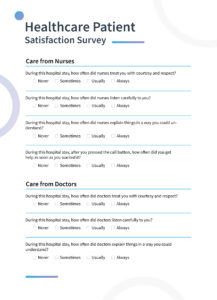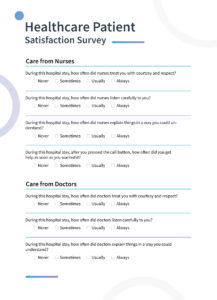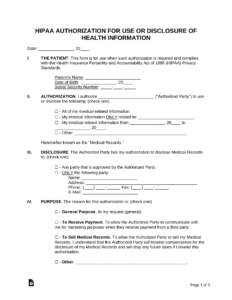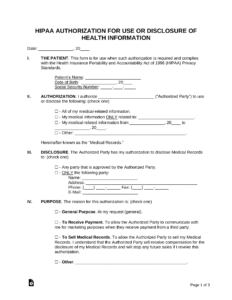Utilizing a pre-designed structure streamlines the process, reduces errors, and minimizes processing time. This benefits both the requester, who receives information promptly, and healthcare providers, who can fulfill requests accurately and efficiently. Clear communication fostered by these forms reduces back-and-forth clarification requests, saving valuable time and resources.
The following sections will explore the key components of these forms, legal considerations, and practical tips for their successful utilization.
Key Components of a Medical Records Request
Effective retrieval of patient health information relies on well-structured requests. Several key components ensure clarity and completeness.
1. Patient Information: Full legal name, date of birth, and any other identifying information (e.g., former names, medical record number) are crucial for accurate identification.
2. Requester Information: If different from the patient, the requester’s full name, relationship to the patient, and contact information are required. Documentation of legal authorization may also be necessary.
3. Specific Records Requested: Clearly stating the specific records needed (e.g., dates of service, types of records, specific reports) helps expedite processing and avoids unnecessary release of irrelevant information.
4. Purpose of Request: Providing context for the request, such as for personal review, legal proceedings, or insurance purposes, can facilitate appropriate handling.
5. Delivery Method: Specifying the preferred method of receiving the records (e.g., mail, fax, electronic delivery, pick-up) and providing necessary details (e.g., mailing address, fax number, email address) is essential.
6. Authorization and Signature: A signature from the patient or legal representative authorizing the release of information is mandatory. The date of signature should also be included.
7. Fees and Payment Information: Applicable fees for copying or processing records should be clearly stated within the form, along with accepted payment methods.
Accurate and comprehensive requests ensure efficient retrieval of necessary information, minimizing delays and supporting timely access to vital health data. These components ensure that requests are processed smoothly, facilitating timely access to critical information.
How to Create a Medical Records Request Template
Developing a standardized template ensures consistent and efficient processing of medical record requests. A well-designed template benefits both requesters and healthcare providers.
1. Establish Clear Sections: Organize the template with distinct sections for patient information, requester information, records requested, purpose of request, delivery method, authorization, and fees.
2. Utilize Clear and Concise Language: Employ straightforward terminology, avoiding medical jargon or complex phrasing. Ensure all instructions are easy to understand.
3. Include Required Fields: Incorporate all necessary fields for complete requests, including full names, dates of birth, contact information, specific record details, and authorization signatures. Consider optional fields for additional context or special instructions.
4. Ensure HIPAA Compliance: Adhere to all relevant Health Insurance Portability and Accountability Act (HIPAA) regulations regarding privacy and authorization. Include clear statements regarding confidentiality and permissible disclosures.
5. Provide Clear Instructions: Offer concise, step-by-step instructions for completing the form. Explain any required documentation or procedures.
6. Offer Multiple Formats: Make the template available in various accessible formats, such as printable PDF, online fillable form, and potentially alternative formats for individuals with disabilities.
7. Regularly Review and Update: Periodically review the template to ensure it remains current with legal requirements, best practices, and organizational policies.
A standardized template facilitates efficient and accurate processing, promoting timely access to crucial information while upholding patient privacy.
Standardized forms for requesting medical records provide a crucial framework for efficient and accurate retrieval of patient health information. Key components such as clear patient identification, specific record details, and appropriate authorization ensure requests are processed smoothly. Developing well-designed templates with clear instructions and accessible formats benefits both individuals seeking access to records and healthcare providers responsible for fulfilling these requests. Adherence to legal regulations and best practices remains paramount throughout this process.
Effective management of health information access is essential for patient care, research, and legal proceedings. Utilizing robust processes and clear communication channels empowers individuals to exercise their right to access their health information while ensuring responsible and compliant handling of sensitive data. Continued refinement of these processes contributes to a more efficient and transparent healthcare system.



